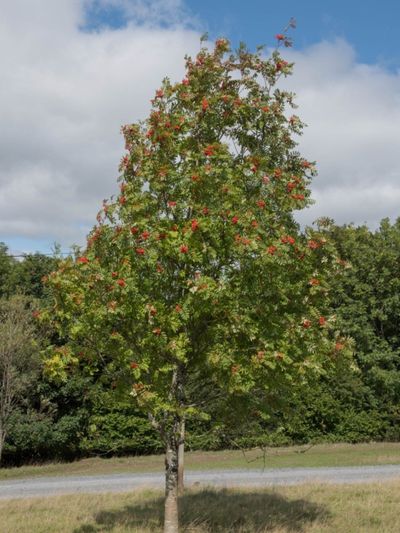European Mountain Ash Identification
The European mountain ash tree is a small deciduous species with a slender trunk and upward-curving branches. Mountain ash can grow to around 30 feet (10 m.) tall in appropriate climates. It dislikes heat and humidity, growing best in USDA plant hardiness zones 3 through 6. If you are looking for European mountain ash identification info, keep in mind that the tree has an erect, oval form when it is young, but as it ages, you begin to see more of its slender trunk. Look for attractive white blossom clusters that appear in late May, followed by bright red berries in autumn. They attract birds and hang on the tree as the leaves turn bright shades of yellow or purple in autumn and fall to the ground.
European Mountain Ash Leaf
Another good means of identifying this tree is by its leaves. The European mountain ash leaf is highly recognizable. Each leaf is long and compound, composed of nine to 14 oval leaflets with serrated edges. Each leaflet narrows slightly at the tip. The color of the foliage also stands out. The upper side of the leaflets are a dull forest green, while the underside is quite pale. In autumn, the leaves turn yellow, orange, red, or purple.
European Mountain Ash Care
European mountain ash care is not difficult if you plant the tree in the right hardiness zone and site. The tree requires full sun and well-draining soil, preferably acidic. Don’t plant where there is salt in the soil or the soil is compacted. Is the European mountain ash invasive? Yes, it can be. The tree propagates readily and naturalizes quickly. It is considered invasive in seven states where it has escaped cultivation and is shouldering out native shrubs. These are Iowa, Illinois, Maine, Minnesota, Oregon, Washington, and Wisconsin. In addition, it has naturalized in 27 northern states.
